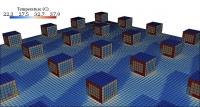 On 29th of October, the new Journal of Urban Climate published a study which indicated that replacing old, heat-trapping paving materials with newer and cooler ones could increase electricity bills of neighboring buildings.
On 29th of October, the new Journal of Urban Climate published a study which indicated that replacing old, heat-trapping paving materials with newer and cooler ones could increase electricity bills of neighboring buildings.
According to the authors, the new materials lower the temperature of the place where they are used. Jan Kleissl, one of the researchers and a professor of environmental engineering at the Jacobs School of Engineering at UC San Diego, states that the benefits of reflective pavements should be studied further.
These new materials could be particularly useful in buildings equipped with smart lighting solutions run by photo-sensitive cells, for example. However, if the building does not have these, the researchers estimated an increase in energy consumption up to 11 %, depending on type and age of the pavements. This is mainly due to the significantly higher number of reflected sun rays back into space.
When these rays get reflected onto the windows of the surrounding buildings, the amount of received daily sunshine reaches 40%. This increases the temperature of the building, and therefore increases the need of air-conditioning. For buildings equipped with smart lightening, however, this is not a disadvantage since it acts as an artificial source of light.
Neda Yaghoobian, a PhD student of Kleissl and Jacobs School used complex weather and building model which she called Temperature of Urban Facets Indoor-Outdoor Building Energy Simulator (TUF-IOBES). It links the energy balance of indoor and outdoor environments while taking into account a number of factors including real weather conditions, indoor heat sources, building and urban material properties, composition of the building envelope (such as windows and insulation), and waste heat from air conditioning.
Although the specific results varied based on the type of building the façade, given that the new pavements are used near buildings with no windows, on roads near parking lots or in districts with warehouses, Kleissl is quite positive that the structures will have beneficial effects.
Via: EurekAlert

































